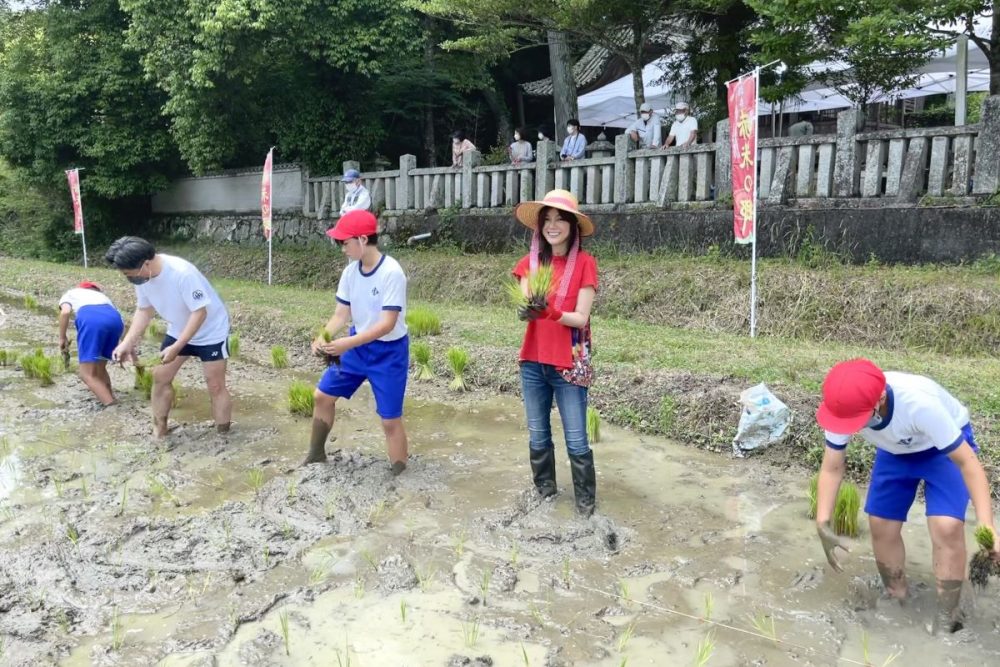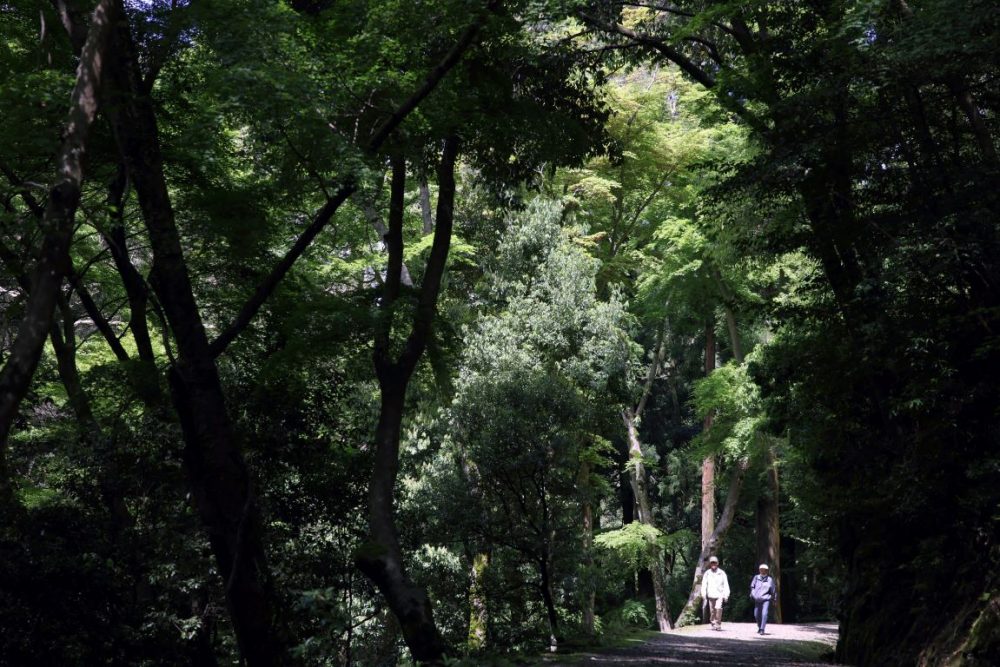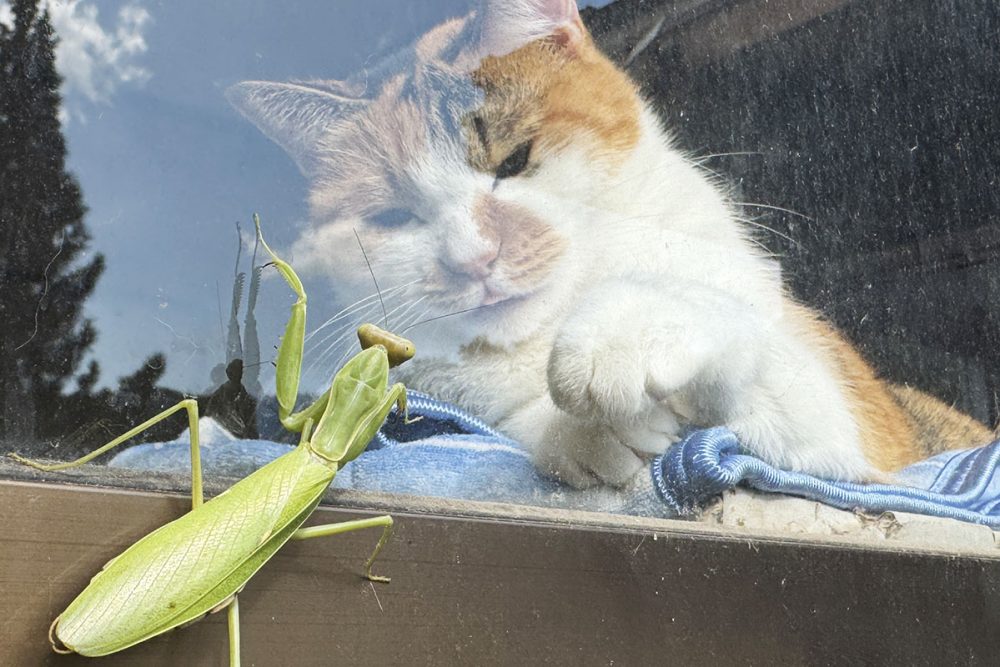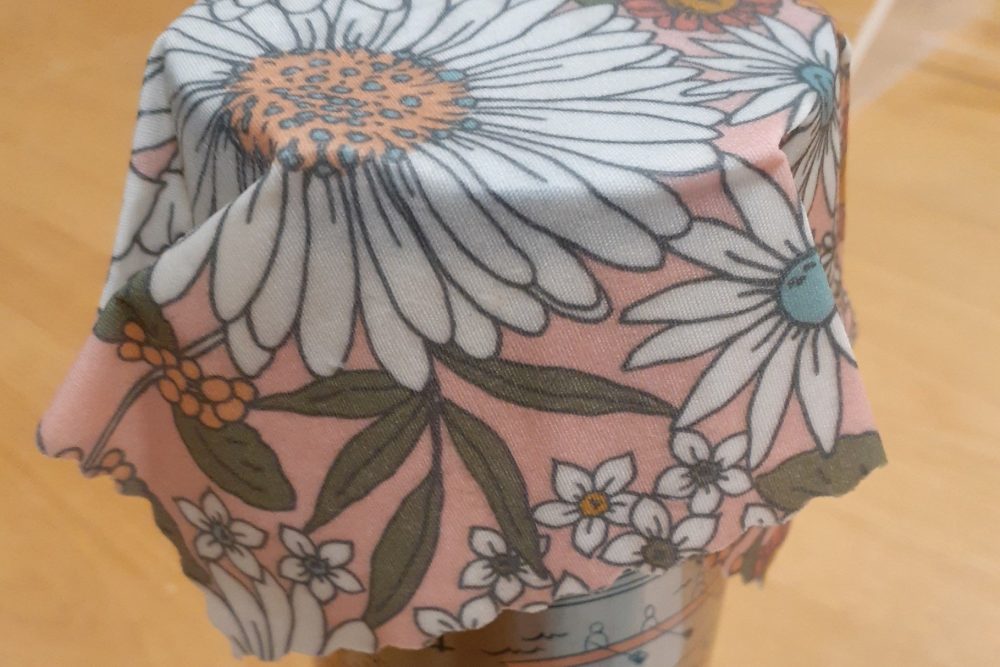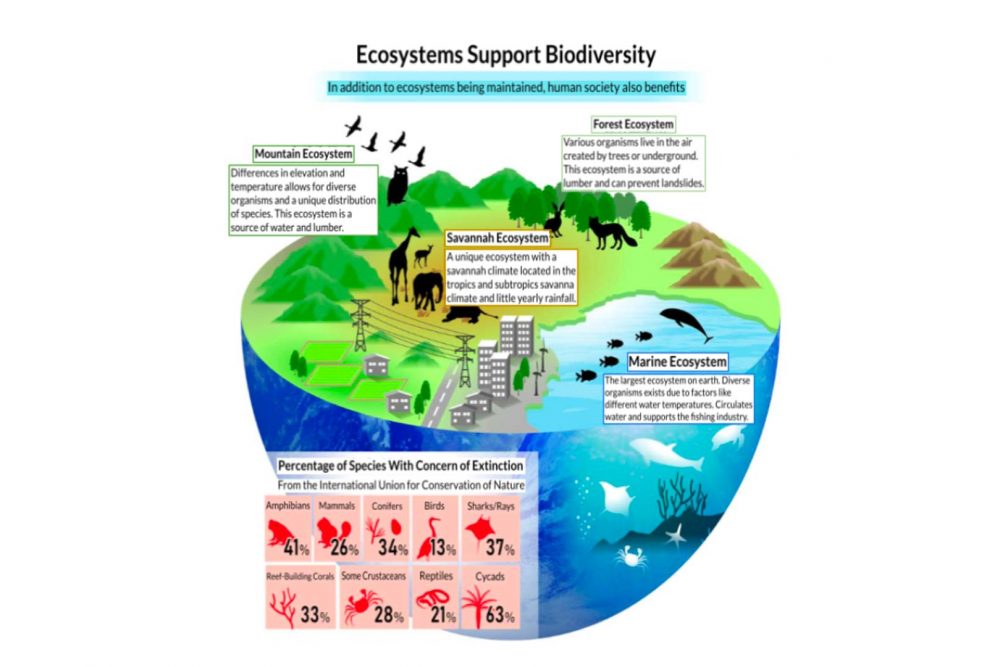Sado Wildlife in Focus | The Surprising Way Crested Ibis Cope with Summer Heat
The latest installment of photojournalist Fumie Oyama's series features a rare video of the endangered crested ibis grappling with the crippling summer heat.
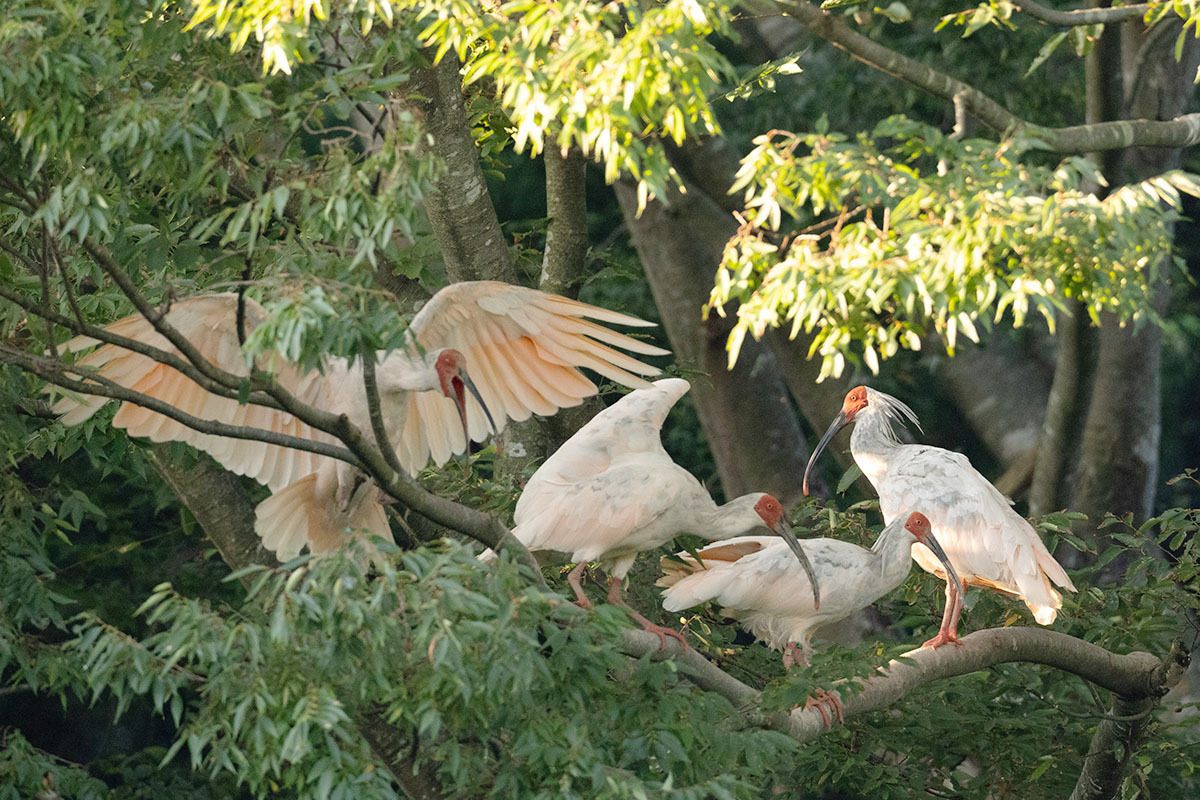
このページを 日本語 で読む
Sado Island in Niigata Prefecture was once a place where air conditioning was unnecessary. But now global warming has led to ongoing summer days where it is hard for us to manage without it. The crested ibis, a special natural monument of Japan, also struggles with the daytime heat. The bird can be seen panting to cool down, taking short breaths with an open beak.
Do Birds Pant?
Summer temperatures on Sado Island at midday exceed 30 degrees Celsius. Mowing the grass along the rice paddy ridges is an important part of farm work. Here, farmers reduce their use of agricultural chemicals to ensure the crested ibis have enough food. But mowing under the scorching sun with no shade is pure torture.
The ibis mostly avoid foraging for food in the sun during the heat of the day, preferring to rest in the shade. When hungry, however, some venture out to search for prey.
That is when they can be observed making a soft sound with their beaks open. Just like dogs that pant with open mouths when hot, crested ibis open their beaks and take repeated shallow breaths to lower their body temperature. This behavior is called panting.
Birds Don't Sweat
Not many animals lower their body temperature by sweating like humans do. Horses, pigs, and hippos can release sweat from glands all over their bodies, which evaporates to dissipate heat. But furry animals like dogs and cats sweat only in small amounts through their paw pads. They primarily cool down by panting.
Birds, including the crested ibis, do not sweat. They use large amounts of energy to fly. So their body temperatures are higher than humans at around 40 degrees Celsius.
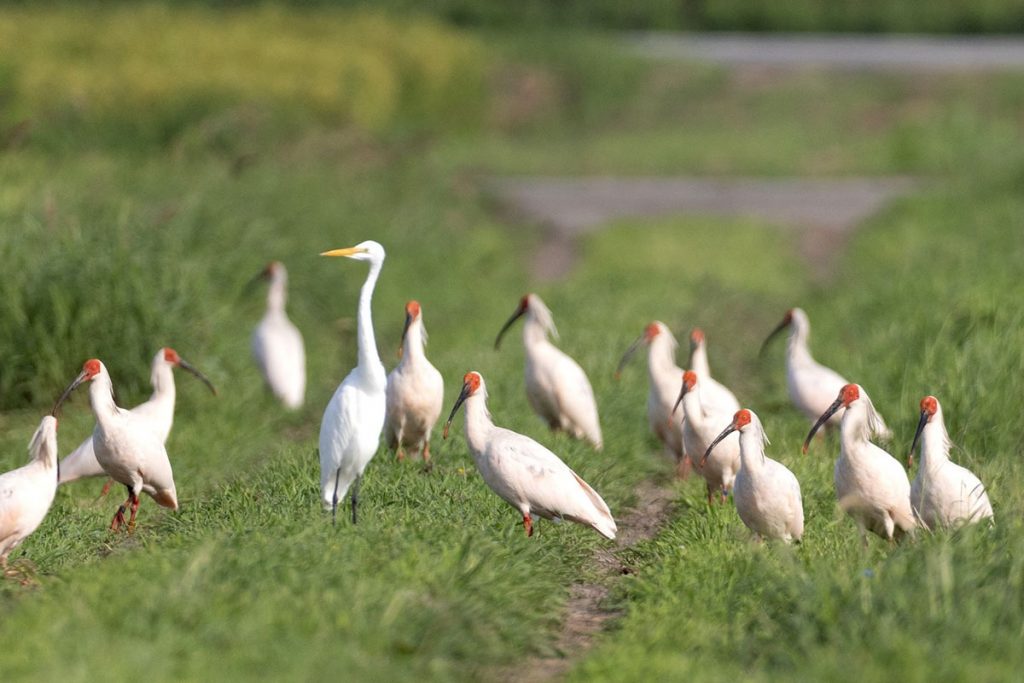
Their bodies are covered in feathers. For humans, this is akin to wearing a down jacket in midsummer. The natural down coat of the crested ibis not only protects the bird from the cold, but also serves as insulation.
As such, to lower their body temperature, birds open their bills so moisture can evaporate through their airways.
From Pairs to Flocks
This year's ibis chicks have fledged, and the birds can now be seen foraging in groups. Until the next breeding season, they will move in flocks rather than pairs.
Another reason that the birds can forage only in the cool early mornings and evenings in summer is that food is plentiful in this season.
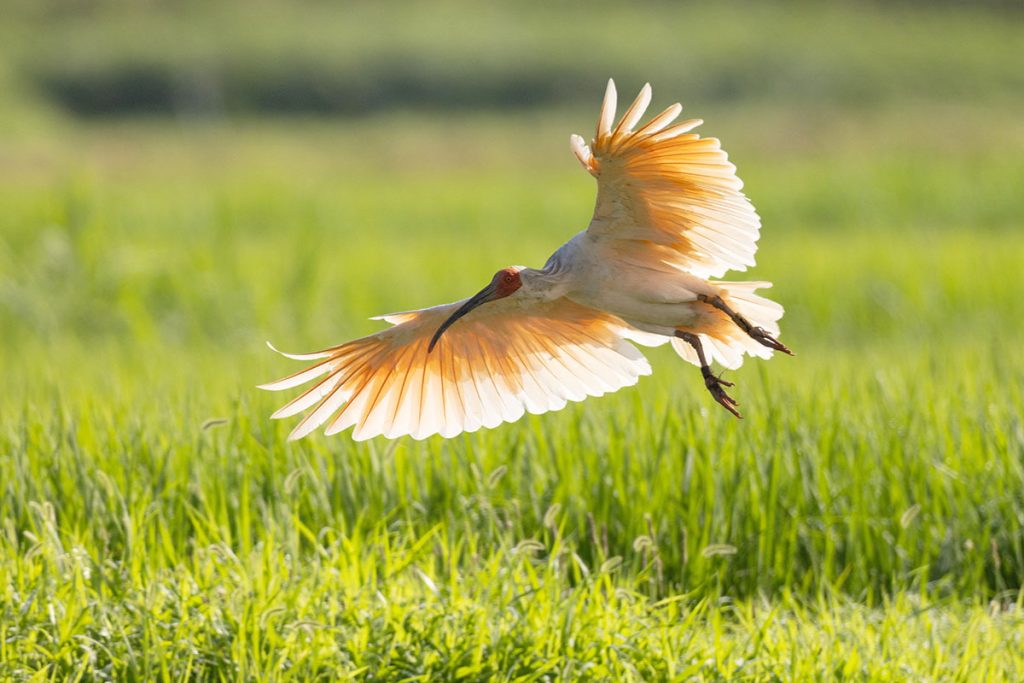
Farming with reduced use of agricultural chemicals ensures sufficient populations of the small animals that serve as their food. But this means we humans have to mow the grass.
As I wipe the sweat that pours like a waterfall from my brow as I mow, I smile grimly at being relegated to this task.
Click here to read more Sado Wildlife in Focus photo essays by photojournalist Fumie Oyama.
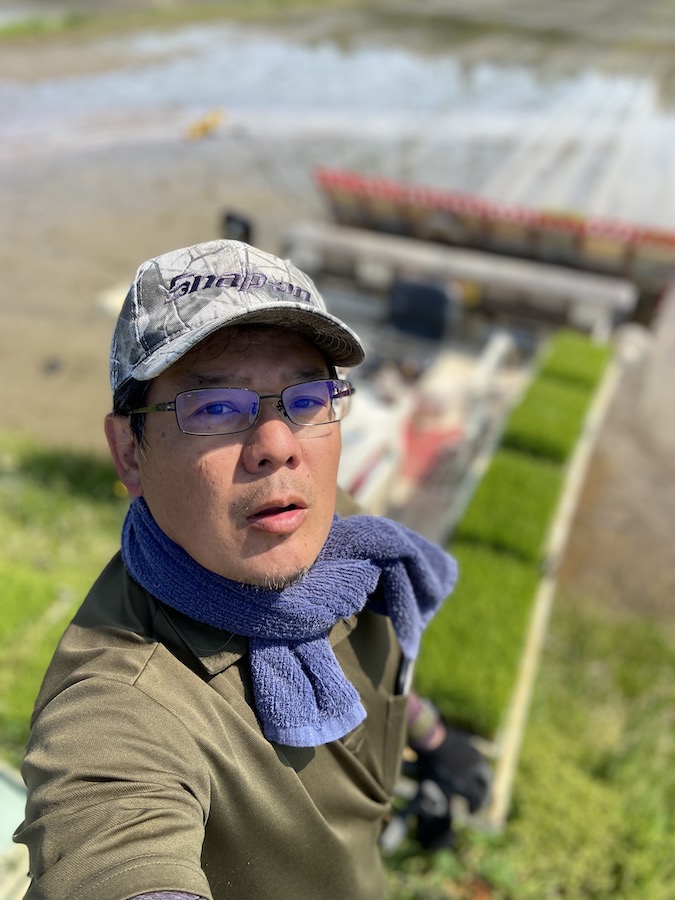
Fumie Oyama is a two-time winner of the Japan Newspaper Publishers & Editors Association Award as a photographer for the Sankei Shimbun. After covering the reintroduction of the crested ibis to the wild for 11 years, Oyama left the company in 2020 to move to Sado Island. There, he continues to photograph the ibis and other wildlife while engaging in farming. He currently promotes the charms of Sado Island as a photojournalist. Follow Fumie Oyama on Instagram.
このページを 日本語 で読む






